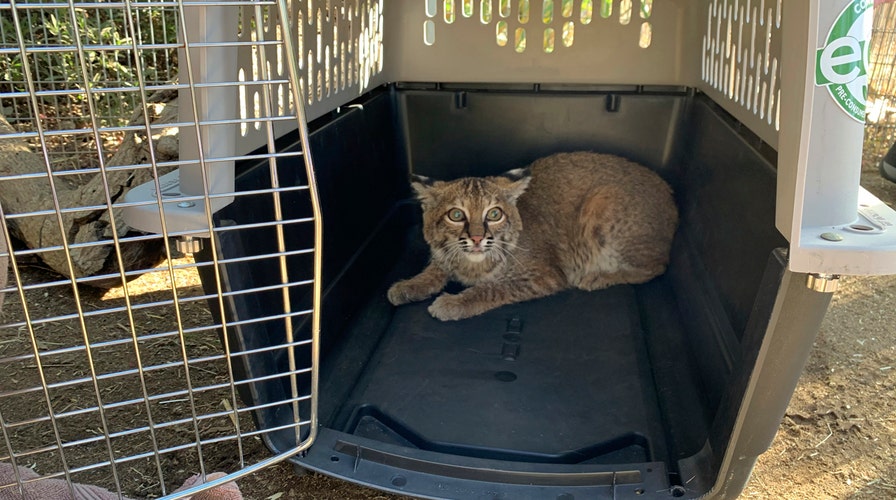Fox News Flash top headlines for December 2
Fox News Flash top headlines are here. Check out what's clicking on Foxnews.com.
A badly burned bobcat rescued from the El Dorado fire in Southern California has been returned to the wild.
“A member of the California Department of Fish and Wildlife (CADFW) picked up the rehabilitated animal from the Ramona Wildlife Center and transported her back to a site outside of the burn area that has been predetermined by biologists to have rich food and water sources for the animal to continue to thrive,” said the San Diego Humane Society in a statement released Tuesday.
The 7- to 9-month-old bobcat had arrived at the San Diego Humane Society’s Ramona Wildlife Center on Oct. 13 with severe burns from the El Dorado Fire in Yucaipa. She was nursed back to health at the Wildlife Center.
“Luckily, the bobcat responded well to her care,” the San Diego Humane Society explained in the statement. “In one month, she doubled in size to more than 9 pounds and after seven weeks she had made a full recovery!”
WILDFIRE THREAT SIMMERS AS RED FLAG WARNING ISSUED FOR PARTS OF SOUTHERN CALIFORNIA

This Nov. 13, 2020 photo provided by the San Diego Humane Society shows a young bobcat at the San Diego Humane Society's Ramona Wildlife Center in Ramona, Calif. The young bobcat that was badly burned in a Southern California wildfire has been returned to its native habitat and will be released back into the wild. (San Diego Humane Society via AP)
The El Dorado blaze erupted in September near the small city of Yucaipa in San Bernardino County. It was sparked by a pyrotechnic device a couple used for a gender reveal party. The fire destroyed several homes and killed a firefighter in San Bernardino National Forest.
CLICK HERE TO GET THE FOX NEWS APP

This Oct. 20, 2020 photo provided by the San Diego Humane Society shows the San Diego Humane Society medical team after treating a young bobcat with severely burnt paws at the San Diego Humane Society's Ramona Wildlife Center in Ramona, Calif.
Bobcats are found throughout the Golden State, according to the California Department of Fish and Wildlife.
“Prime bobcat habitats are chaparral vegetation types and the brushy stages of low and mid-elevation conifer, oak, riparian, and pinyon-juniper woodlands and forests,” the agency explains on its website. “Bobcats use areas with dense brush cover and cavities in rocks, snags logs, and stumps for both cover and for denning.”
The Associated Press contributed to this article. Follow James Rogers on Twitter @jamesjrogers

